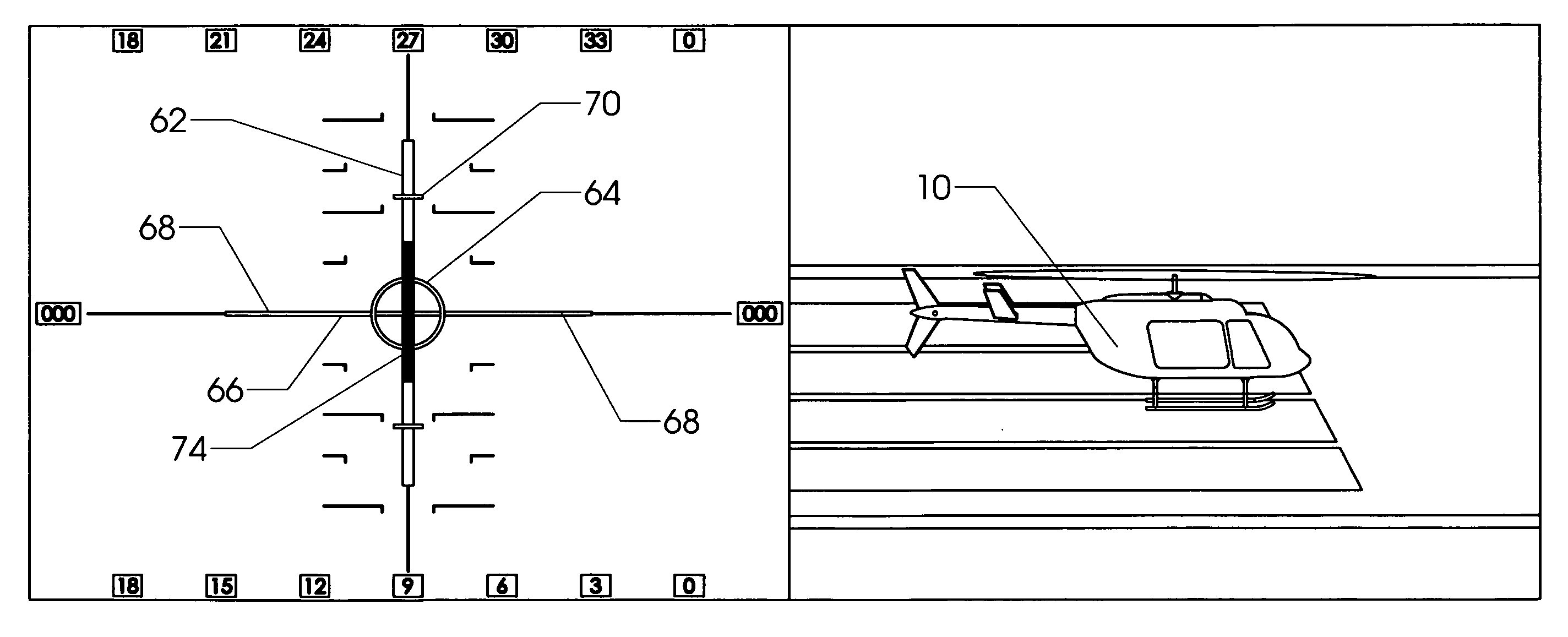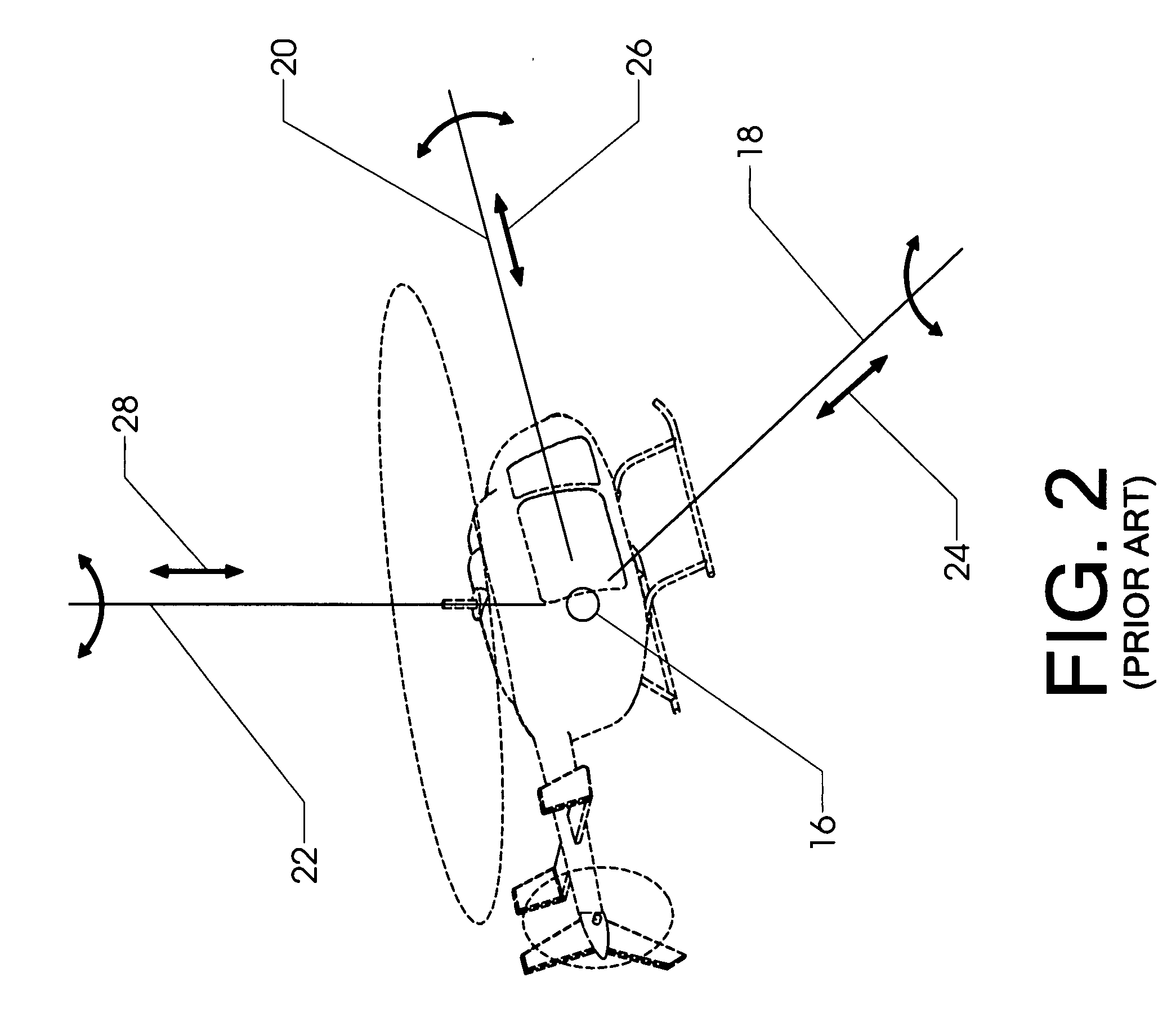Motion-resolving hover display
a technology of hover display and motion resolution, applied in the field of flight instruments, can solve the problems of difficult learning of hovering, failure to master the art of hovering and maneuvering at low speed, and instruments that do not provide an integrated and readily perceived picture of the motion of the aircra
- Summary
- Abstract
- Description
- Claims
- Application Information
AI Technical Summary
Benefits of technology
Problems solved by technology
Method used
Image
Examples
Embodiment Construction
[0099]The present invention is a flight instrument designed to provide a wealth of information to a pilot flying an aircraft, particularly when the aircraft is performing hover maneuvers. The flight instrument will be referred to as a “hover display.” The hover display could be physically realized in many different ways. However, as the use of flat-panel electronic displays is now common in aviation, an embodiment using this approach will be described. Those skilled in the art will know that such flat panels can be constructed using LCD's, plasma displays, and the like. The physical construction of such components is well beyond the scope of this disclosure, and in any event well understood by those with knowledge of avionics.
[0100]FIG. 8 shows the first portion of the display, which will be referred to as the external reference display. It is conceptually similar to prior art attitude indicators, which are also sometimes known as “artificial horizons.” Horizon line 52 represents th...
PUM
 Login to View More
Login to View More Abstract
Description
Claims
Application Information
 Login to View More
Login to View More - R&D
- Intellectual Property
- Life Sciences
- Materials
- Tech Scout
- Unparalleled Data Quality
- Higher Quality Content
- 60% Fewer Hallucinations
Browse by: Latest US Patents, China's latest patents, Technical Efficacy Thesaurus, Application Domain, Technology Topic, Popular Technical Reports.
© 2025 PatSnap. All rights reserved.Legal|Privacy policy|Modern Slavery Act Transparency Statement|Sitemap|About US| Contact US: help@patsnap.com



